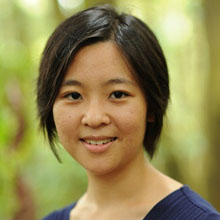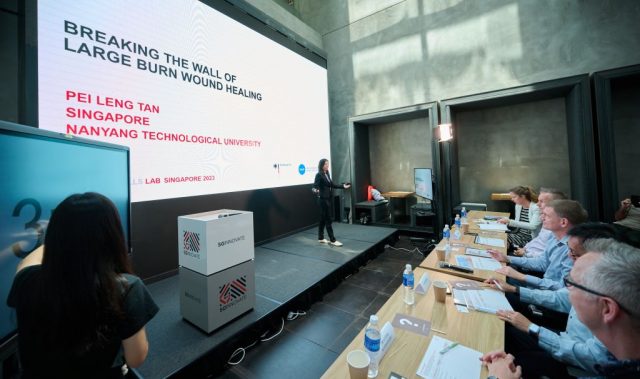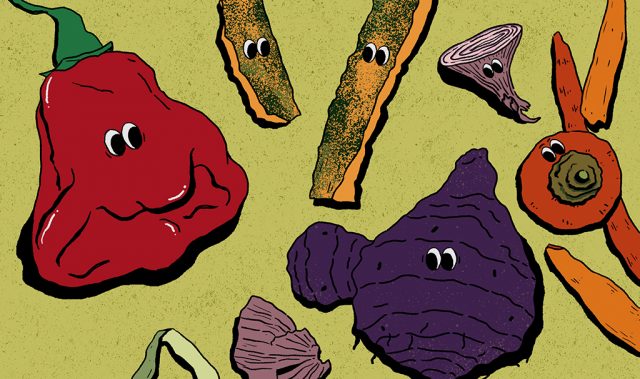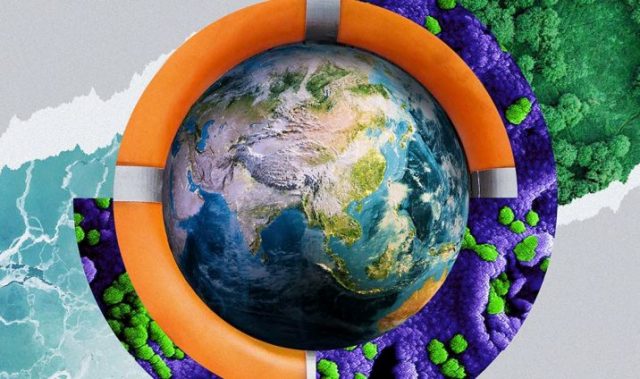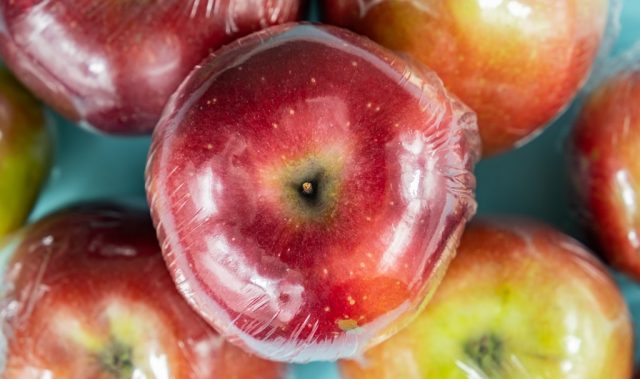
AsianScientist (Jun. 20, 2016) – As equipment beeps and whirrs around us in a Nanyang Technological University (NTU) laboratory, Teoh Swee Hin, a bioengineering professor there, shows off a spherical device about the size of a small watermelon, which churns about like the belly of a cement mixer.
This is a bioreactor he designed more than a decade ago to mimic the natural rough-and-tumble environment in which cells develop while in the body.
For more than three decades, Professor Teoh, 60, has been applying his engineering know-how to the biomedical field, seeking to understand the forces that make stem cells and bone cells grow; and, with this understanding, develop devices to improve medical treatments.
A biomedical calling
Measured, soft-spoken and calm, Professor Teoh might have made an excellent doctor. Growing up in Ipoh, Perak, he aspired to be a doctor, but that ambition was thwarted at 14 when his father, a clerk in an ice factory, died.
Unable to afford medical school, Professor Teoh found an alternative far away. From odd jobs, savings and what little his father had left, he scraped together enough for a one-way ticket to Australia, where he studied materials engineering at Monash University, which was tuition-free at the time.
For his PhD there, he studied how the common plastic polyethylene—used in medical and domestic applications—stretches, breaks and tears under different conditions of manufacturing and usage. After that, he followed his wife, a Singaporean accountant, back home, signing on to teach mechanical engineering at the National University of Singapore (NUS).
Meanwhile, Professor Teoh never let his medical dreams go.
In the early 1980s Victor Chang, a renowned Australian cardiothoracic surgeon who also operated at Mount Elizabeth Hospital in Singapore, was looking for engineers to help him design better mechanical heart valves. Professor Teoh leapt at the chance.
“At that time, to get a $5,000 or $10,000 research grant was a very big thing,” he says.
Dr. Chang fully funded the work and became Professor Teoh’s first mentor. The latter helped study heart-valve failure for Dr. Chang’s multinational firm, Pacific Biomedical Enterprises, which made mechanical and tissue heart valves to replace those from organ donors.
“He was the first one [who] I felt had a mission to combine clinical work with manufacturing, and that caught my attention,” says Professor Teoh.
But the collaboration came to a tragic end after just eight years. In 1991, Dr. Chang was fatally shot in a failed extortion attempt in Sydney.
Bone scaffolds and bioreactors
Dr. Chang’s untimely death deflated the team’s research ambitions.
“All our work on fatigue evaluation, mechanical and materials evaluation, also went with him,” Professor Teoh says of his mentor. Starting over again “took a lot of stars to be aligned”.
Not till a few years later, after conversations with surgeons and tissue-engineering experts such as Charles Vacanti, a US doctor, did Professor Teoh hit upon his next big breakthrough: plastic scaffolds for bone and other tissue.
Surgeons trying to repair jaw, skull or other injuries often struggle to get enough bone for procedures, either from their patients’ own bodies or cadaver donations. For larger repairs, titanium plates or other synthetic materials can be used, but these may be rejected by the body after surgery.
Instead, Professor Teoh and his colleagues designed a technology that combined the best of both worlds. They made scaffolds out of a special plastic material called polycaprolactone, which degrades into carbon dioxide and water and is absorbed harmlessly into the body.
These scaffolds are first seeded with bone marrow stem cells that eventually grow into sturdy bone, and then implanted into the body. Initial application of this technology involved small discs of the material being used to plug the burr-holes in patients’ skulls after brain surgery.
Later, the advent of 3D-printing technologies in the manufacture of scaffolds meant they could be custom-shaped and sculpted to whatever form was needed.
“It’s like building a tall building,” Professor Teoh explains. “You have scaffolds which you remove later. In this case, you can’t remove the scaffolds, so we have to design a bioresorbable that dissolves.”
In 2003, Professor Teoh and his team set up a firm, Osteopore International, to market and sell the bioresorbable implants.
He continues to study implants and materials from various angles, including research into: why implants might fail; and ways by which to improve cell growth around implants.
For instance, a phenomenon called delayed dehiscence—in other words, the breakdown of something weeks or months after it is implanted—can occur some time after any implant (not just the bioresorbable kind).
“It’s a very strange phenomenon,” Professor Teoh says. “When we put a jaw implant in, for instance, the mucosa might grow over it, the patient smiles, we think it’s going to be successful—but then six months later, the whole thing falls apart.”
He and his colleagues are seeking to understand why this occurs. He believes it is likely due to micro-motion—the implant shifting about almost imperceptibly and breaking down.
Meanwhile, the cell bioreactor, which mimics the physiologic conditions of the body under which cells grow, was a happy accident.
A graduate student in Professor Teoh’s laboratory was pregnant with twins.
“She said, ‘Prof, my babies are tumbling,’” he recalls. “We wondered why… so out of pure curiosity, we designed a bioreactor that rotates like a baby in the mother’s womb. Suddenly, the cells grew four times faster.”
“I began to realize that our cells are never static,” he says. “If you take cells which are in constant motion from the first day in the mother’s womb, experience tumbling and flow, and you put them in a static 2D environment… they grow in that unnatural environment and may not like your real body’s conditions when you try to put them back in the body.”
Bone grown in the reactor, which rotates on two axes, is stronger than that cultured on a plate and has fewer dead cells. The bioreactor technology has been licensed to Quinxell Technologies, a Singapore startup. While NASA studied a similar bioreactor which cultured cells in near-zero gravity, Professor Teoh’s was one of the first in the world to rotate on two axes, and he believes that gravity’s pull this way helps bone cells formation and growth.
“Entrepreneurship was a dirty word”
When Professor Teoh and his team began to spin-off Osteopore International, “entrepreneurship was a dirty word,” he says. The university frowned upon it, as though “you were using university facilities for your own profits… it was not in your KPIs [key performance indicators]. They made us do all kinds of record-keeping.”
Today, Professor Teoh’s firms are “just making ends meet”, he says. He focuses largely on research and leaves the running of the businesses to executive teams. His successes have helped turn around perceptions of university-based entrepreneurship, which Singapore’s research institutions now promote.
Professor Teoh describes how his entrepreneurial instincts were nurtured as a child. To support the family, the youngest of five children resorted to selling encyclopedias door-to-door during school holidays. He lugged the 12-volume set about the city on public transport in all weather, had doors shut in his face, and learned to sell by referral to friends’ relatives.
The budding entrepreneur also bred and sold his orchid-enthusiast father’s plants on the family’s small plot of land in a rundown tin-mining neighborhood in Ipoh. Buyers were charmed by the youngster’s knowledge of Phaelanopsis and Cattleya, Dendrobiums and Vandas, and he soon learned how to bargain.
“I would greet them at the door so I could see what car they drove—whether it’s a lorry or a Mercedes,” he says.
He knew when to market and price the plants as potted decorations or as “pieces of art”.
“Marketing is not book-learning alone, it is looking at the value proposition,” he says. “It’s helped me connect and translate research outside the lab, beyond the hospital.”
Besides setting up firms and licensing technologies to increase their reach, the animal lover also sees a humane mission in some of his work.
“I had two dogs,” Professor Teoh says. “It’s very painful for me to make use of animals for experiments. When it comes to saving human lives, I’ll do it, but it’s not for fun. Why use ten rats when five will do?”
Growing tissue in bioreactors, for instance, decreases the need for grafts from animals.
Renaissance and beyond
Improving engineering education is another key objective for Professor Teoh, who has been director of NTU’s renaissance engineering program since 2012. The program, started in 2011, rounds out top engineering students with training in business and the liberal arts; students also get a year to study abroad at select universities, such as the University of California, Berkeley and Imperial College London, to get a different perspective on their discipline, career and life. The objective is to provide them with a holistic education that combines sound engineering fundamentals with business savvy.
For Professor Teoh, training graduate students at NUS and now NTU’s school of chemical and biomedical engineering is a way of giving back to society. His first PhD students, Freddy Boey and Raj Thampuran, have now become, respectively, NTU provost and Agency for Science, Technology and Research managing director.
“Part of the joy of being a professor is this: that our students are better than us and doing much more in areas that we never dreamed we could do ourselves,” he says.
Asked about his hopes for science and engineering in Singapore, Professor Teoh thinks that despite the successes of the renaissance engineering program, the engineering profession needs an image makeover.
“When I set up a company, I employ a CEO, CFO, accountants, lawyers—but all of them rely on engineers,” says the father of a robotics graduate student, a lawyer, and an investment banker.
“It’s STEM [science, technology, engineering and mathematics] that brought Singapore through the first 50 years, and I hope that will remain,” Professor Teoh says.
He believes that Singapore’s future growth should come from making things that benefit people: “Do you want more casinos or more engineers?”
This feature is part of a series of 25 profiles, first published as Singapore’s Scientific Pioneers. Click here to read the rest of the articles in this series.
———
Copyright: Asian Scientist Magazine; Photo: Cyril Ng.
Disclaimer: This article does not necessarily reflect the views of AsianScientist or its staff.




